Tirana: Religious Sites Guided Walking Tour — An honest look at exploring Tirana’s spiritual landmarks
If you’re curious about how religion shapes Albania’s capital, this 2.5-hour guided walking tour offers a thoughtful glimpse into Tirana’s diverse faith landscape. From historic mosques to modern cathedrals and the influential Bektashi order, it’s a chance to see the city’s spiritual fabric up close.
What makes this experience stand out? First, the chance to visit the Et’hem Bey Mosque, with its beautifully painted frescoes that are quite unusual for Islamic art. Second, the opportunity to explore the Orthodox Cathedral of the Resurrection of Christ, a grand and architecturally impressive church. Third, the modern Saint Paul’s Cathedral, with stained glass windows featuring figures like Mother Teresa and Pope John Paul II that add a contemporary flair.
However, a key consideration is the tour’s reliance on public transport, which might not suit those seeking a more seamless or private experience. This is best suited for travelers who enjoy walking, learning about religious diversity, and appreciate authentic, culturally rich encounters.
Key Points:
- Authentic religious sites showcase Tirana’s historical and contemporary faith landscape.
- Guided experience with an English-speaking guide ensures engaging insights.
- Visit to the Bektashi Center offers unique perspectives on this progressive Sufi order.
- Easy access starting from Skanderbeg Square makes it convenient to join.
- Cultural respect is emphasized, including dress code and photography restrictions.
- 2.5-hour duration makes it a manageable but enriching sightseeing option.
An honest, detailed look at Tirana’s religious sites tour
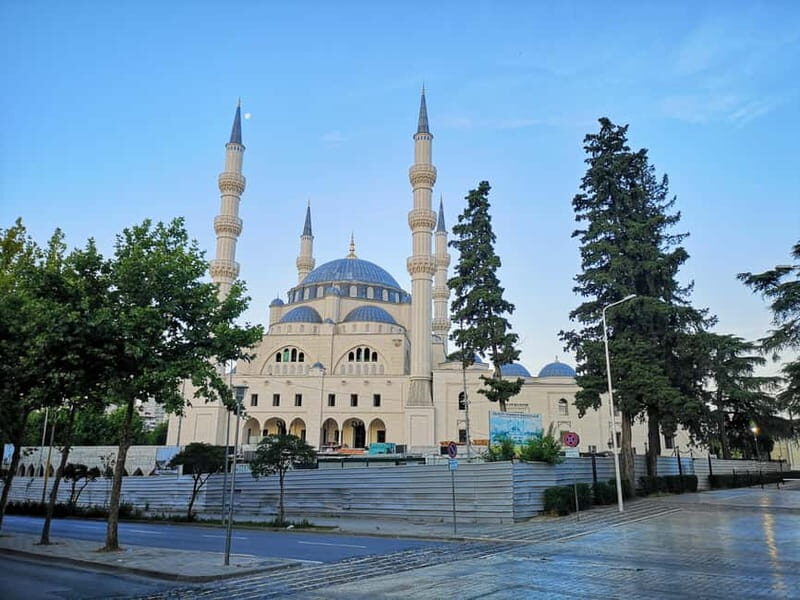
Into exploring Tirana on foot? Check out these other walking experiences we've looked at
Starting at Skanderbeg Square—A central hub for Tirana’s history and culture
The tour kicks off at Skanderbeg Square, right by the Opera House and Ballet Theatre, marked by the black stairs leading to the meeting point. From here, the walk begins through the city, giving you a first glance at Tirana’s lively atmosphere. The guide, whose name we learned is Elena, is eager and knowledgeable, offering context about the city’s religious and cultural mix from the get-go.
Et’hem Bey Mosque — A highlight for unique frescoes and history
The first major stop is the Et’hem Bey Mosque, built in the early 19th century. What sets this mosque apart are its frescoes — colorful depictions of waterfalls, trees, bridges, and even small animals that you wouldn’t expect in Islamic art. Visitors have noted that “the frescoes are surprisingly detailed and lively,” making it a memorable visual experience.
Inside, the atmosphere is calm and respectful. Visitors are encouraged to dress modestly, which is a must for entering religious sites. Our guide points out that the mosque is not just a place of worship but a symbol of Tirana’s resilience, having survived periods of suppression and renovation.
Orthodox Cathedral of the Resurrection of Christ — Architectural grandeur and mosaics
Next, your journey takes you to the Orthodox Cathedral, one of the largest in the Balkans. The building’s impressive size and vibrant mosaics catch your eye immediately. Inside, the iconostasis (a wall of icons) is grand, and the interiors are decorated with stunning mosaics that depict biblical scenes, offering a visual feast for those interested in religious art.
Visitors have appreciated the chance to learn about Orthodox Christianity’s role in Albanian history. The guide points out details like the mosaics’ craftsmanship and shares stories about the cathedral’s role in community life.
More Great Tours NearbySaint Pauls Cathedral — Modern architecture with meaningful stained glass
Moving on, the Saint Pauls Cathedral offers a more contemporary contrast. Its glass windows depict notable figures, including Mother Teresa and Pope John Paul II, adding a modern touch infused with local and international significance. The stained glass, with its bright colors and detailed images, makes this stop stand out.
While the church is new compared to the previous sites, visitors say it provides an inspiring space that reflects Albania’s openness to different faiths. The guide mentions that, despite being modern, it retains spiritual significance and is a symbol of the country’s religious tolerance.
Enjoying having a local guide? These other guided experiences in Tirana might interest you
- Full-Day Guided Tour to Lake Bovilla, Albania
- Berat Wine Tour Guided Winery Tour With Transfers and Tastings
- Private Walking Tour Visit to Durrës With Licensed Guide
- Bike Tour Tirana: Guided Sightseeing and Cultural City Tour
- Self-Guided Hiking Tour: Theth, Valbona & Koman Lake in 5 Days
- Berat Guided Trip to Mount Tomorr and Bogove Waterfall
Tanners Bridge & Tanners Mosque — A glimpse of Ottoman-era Tirana
A short stroll leads you to the Tanners Bridge and the small Tanners Mosque, which are less known but historically rich. The mosque’s proximity to the Ottoman-era bridge offers a glimpse into Tirana’s past, before the city’s modern developments.
Reviewers mention that these spots add a layer of authenticity to the tour, with some noting that “standing near the old bridge and mosque, you can almost hear the footsteps of traders from centuries ago.” It’s a quiet, reflective moment away from the city’s busier parts.
Bektashi World Center and Museum — Learning about Albania’s progressive Sufi order
The highlight for many is the visit to the Bektashi World Center and Museum. This Sufi order is known for its progressive views and interfaith dialogue, which resonates with Albania’s reputation for religious harmony.
Inside the center, you’ll find exhibits explaining the Bektashi’s beliefs, rituals, and history. Visitors often remark that “the museum gives a refreshing perspective on spirituality and tolerance,” making it a meaningful stop. The guide emphasizes that the Bektashi are an influential part of Albanian identity and culture.
Namazgja Mosque — A modern Islamic landmark
The tour concludes at the Namazgja Mosque, one of the largest in the Balkans. Its modern Islamic architecture and expansive size make it a striking sight. Tour participants note that it’s a bold statement of religious presence and a symbol of contemporary Islamic life in Tirana.
The mosque’s large prayer hall and intricate design showcase the blend of tradition and modernity. Visitors are reminded to respect the site’s religious significance and observe the photography rules.
Practicalities and overall value
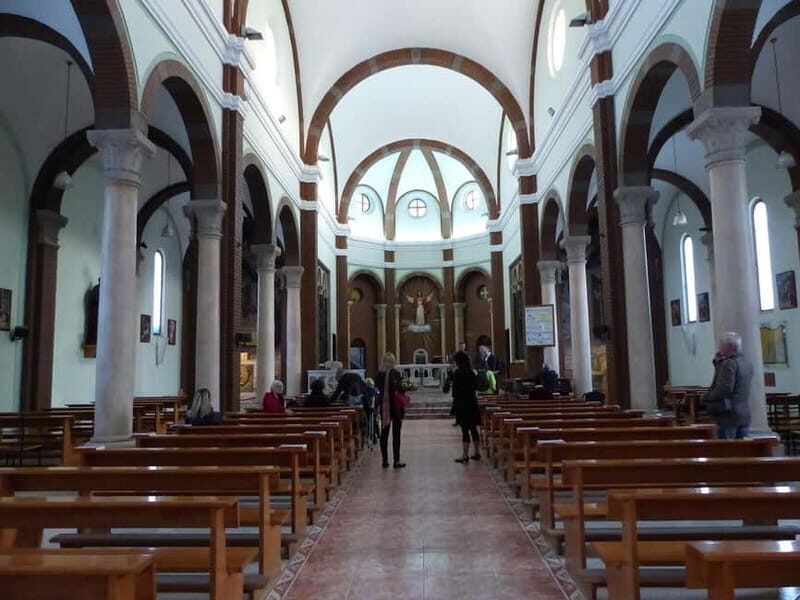
This tour is quite comprehensive for its 2.5-hour runtime, covering a range of religious sites that showcase Tirana’s diversity. The inclusion of both ancient and modern buildings, along with the Bektashi Center, offers a well-rounded perspective.
While transportation between sites relies on public transit and walking, this actually adds to the experience, offering authentic glimpses of Tirana’s everyday life. The private group format ensures a more intimate, flexible experience, and the English-speaking guide ensures you’ll get insightful commentary along the way.
Pricing, based on reviews, is reasonable considering the depth of exploration, especially with the inclusion of key religious landmarks and the museum visit. Many travelers appreciated the flexibility of booking in advance with the “reserve now & pay later” option, making it easy to plan around unpredictable schedules.
What travelers loved most
- The frescoes at Et’hem Bey Mosque – surprising and colorful details.
- The architectural grandeur of the Orthodox Cathedral.
- The modern stained glass at Saint Pauls, which adds contemporary relevance.
- The insights into the Bektashi Order — a unique Albanian spiritual tradition.
- The accessibility of the tour’s meetings point, centrally located at Skanderbeg Square.
- The authentic, unhurried pace that allows genuine appreciation of each site.
What could be improved
Some reviewers mention that transportation is via public transit, which might be less comfortable for those with mobility issues or those expecting a private vehicle. Also, photography in certain sites may be restricted, so it’s wise to check at each location.
Who is this tour best for?
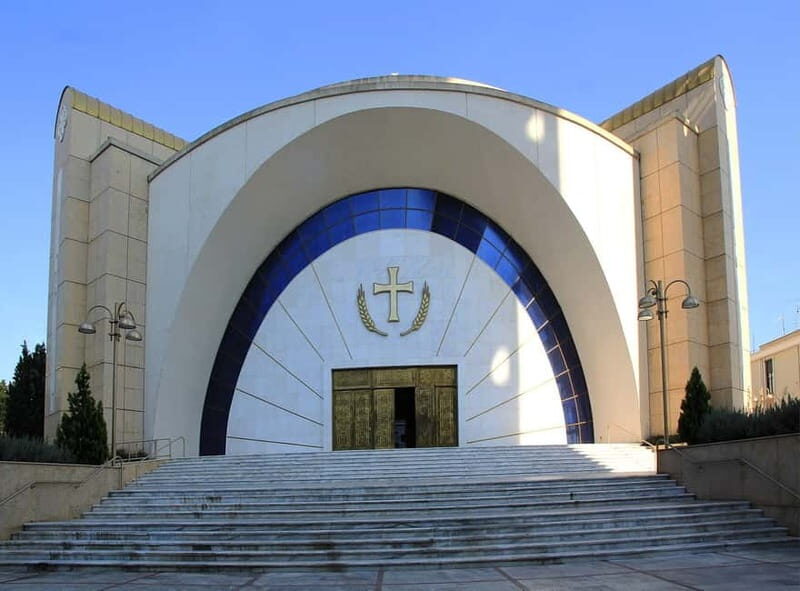
This tour appeals most to travelers interested in religious history, cultural diversity, and authentic experiences. It’s suitable for those who enjoy walking and want a curated, insightful overview rather than trying to visit these sites independently.
Because it involves some modest walking and respecting religious dress codes, it’s ideal for travelers with reasonable mobility and flexible schedules. Families with older children might find it educational and meaningful, especially if they’re eager to learn about Albania’s unique blend of faiths.
If you’re looking for a quick but in-depth look at Tirana’s spiritual life, this guided tour provides a balanced view of history, architecture, and contemporary culture.
Frequently Asked Questions
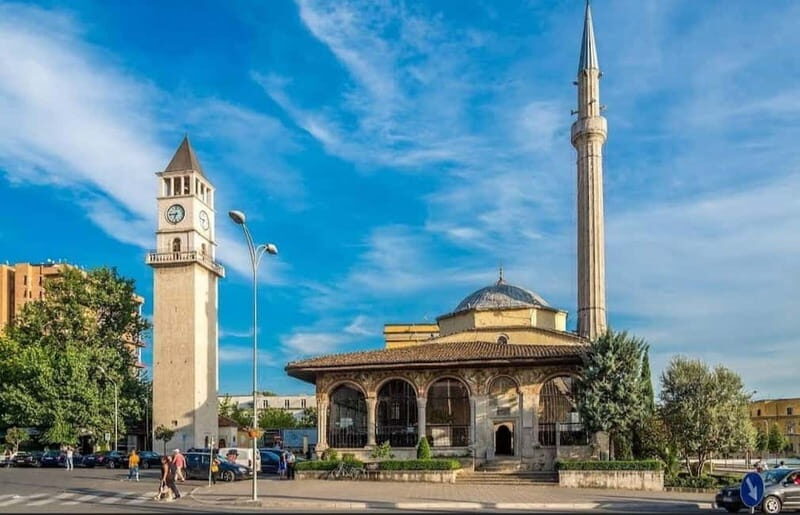
Is transportation included in the tour?
No, transportation between sites is via public transit and walking. The tour starts and ends at Skanderbeg Square, which is centrally located.
What should I bring on the tour?
Bring comfortable shoes for walking, a camera to capture the beautiful frescoes and architecture, and water to stay hydrated.
Are there any dress code requirements?
Yes, respectful clothing is required for visiting religious sites; women should consider wearing skirts or pants and covering shoulders.
Can I take photos inside the sites?
Photography may be restricted in certain areas, so it’s best to follow any posted rules or guidance from your guide.
Is this tour suitable for children?
It’s not recommended for children under 6 years old or for those with mobility issues, as there is some walking involved and cultural sensitivities to respect.
What languages are supported?
The tour is conducted in English, making it accessible for most international travelers.
Final thoughts
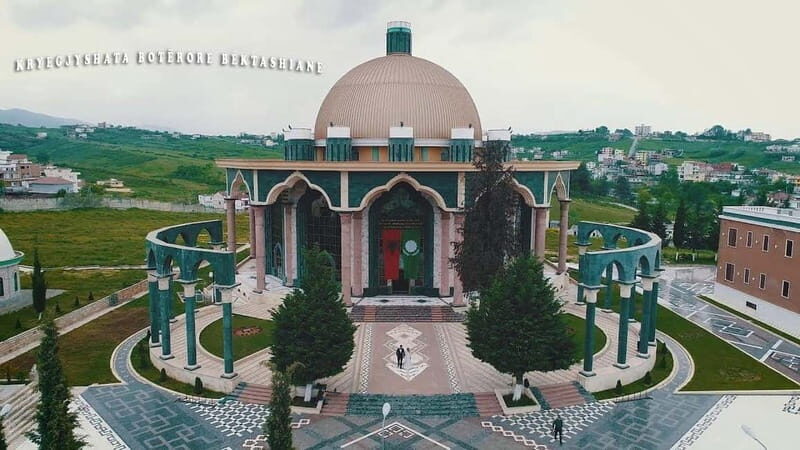
This Tirana: Religious Sites Guided Walking Tour offers a thoughtfully curated journey through the city’s faith landscape. It balances historical depth, architectural admiration, and the chance to understand Albania’s religious harmony—especially through visits to iconic mosques, churches, and the Bektashi Center.
The experience is particularly valuable for those interested in cultural diversity or seeking a meaningful way to connect with Tirana beyond its modern streets. With a knowledgeable guide, authentic sites, and a manageable duration, it provides real insight into the spiritual life that shapes this vibrant Balkan capital.
For travelers who want an authentic, respectful, and visually engaging introduction to Tirana’s religious diversity, this tour delivers a solid, well-rounded experience worth considering.
You can check availability for your dates here:More Walking Tours in Tirana
- Tirana Center Walking Tour ( In French, Italian & English)
- Tirana Walking Tour; Guided Small Group
- Tirana: Between Light and Darkness Guided Walking Tour
- Christmas Fairy Tale in Tirana Private Walking Tour
- Tiranas Communist Past; Small Group Walking Tour
- Walking tour of Tirana – discoveries, history, and culture (in FRENCH)
More Tours in Tirana
- Tirana: Petrela Castle and Black Cave Tour with Local Lunch
- From Tirana: 3-Day Korab Mountain Hiking Tour
- Durres Countryside Vineyards Wine & Food Tasting Tour
- From Tirana/Durres/Golem: Vlora City and Zvernec Island Tour
- Bike or E-Bike Tour Tirana : Highlights & Grand Park Guided
- From Tirana: Komani Lake Day Tour with Traditional Lunch
More Tour Reviews in Tirana
- Tirana: Petrela Castle and Black Cave Tour with Local Lunch
- From Tirana: 3-Day Korab Mountain Hiking Tour
- Durres Countryside Vineyards Wine & Food Tasting Tour
- From Tirana/Durres/Golem: Vlora City and Zvernec Island Tour
- Bike or E-Bike Tour Tirana : Highlights & Grand Park Guided
- From Tirana: Komani Lake Day Tour with Traditional Lunch
Still browsing? Here are more Tirana experiences we've covered recently
- 12 Most Highly Rated Walking Tours In Tirana
- Tirana’s 3 Best Dinner Experiences (With Prices & Reviews)
- 8 Best National Park Tours In Tirana (With Prices)
- We Rank Tirana’s 8 Top Workshops & Classes
- The Top 6 Shopping & Market Tours In Tirana
- 12 Fantastic Wine Tours In Tirana
- The 12 Most Popular Tours In Tirana
- 7 Of The Best Lunch Experiences In Tirana
- Our Picks For The 10 Best Tours & Experiences In Tirana
- 3 Top-Rated Tirana Drinking Tours
- 13 Top Historical Tours In Tirana (With Reviews & Prices)
- The Top 4 Photography Experiences In Tirana
